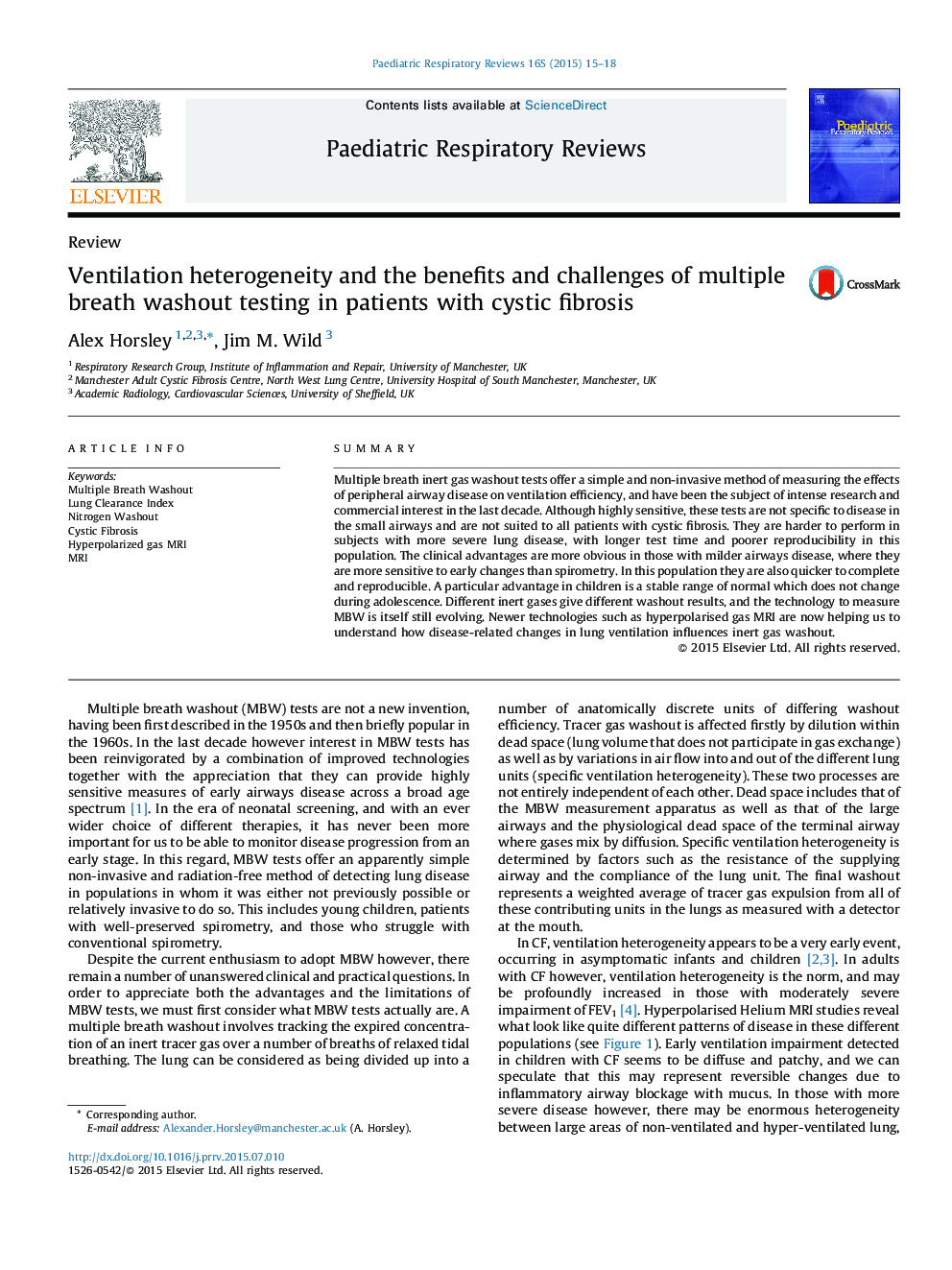| Article ID | Journal | Published Year | Pages | File Type |
|---|---|---|---|---|
| 4170946 | Paediatric Respiratory Reviews | 2015 | 4 Pages |
SummaryMultiple breath inert gas washout tests offer a simple and non-invasive method of measuring the effects of peripheral airway disease on ventilation efficiency, and have been the subject of intense research and commercial interest in the last decade. Although highly sensitive, these tests are not specific to disease in the small airways and are not suited to all patients with cystic fibrosis. They are harder to perform in subjects with more severe lung disease, with longer test time and poorer reproducibility in this population. The clinical advantages are more obvious in those with milder airways disease, where they are more sensitive to early changes than spirometry. In this population they are also quicker to complete and reproducible. A particular advantage in children is a stable range of normal which does not change during adolescence. Different inert gases give different washout results, and the technology to measure MBW is itself still evolving. Newer technologies such as hyperpolarised gas MRI are now helping us to understand how disease-related changes in lung ventilation influences inert gas washout.
